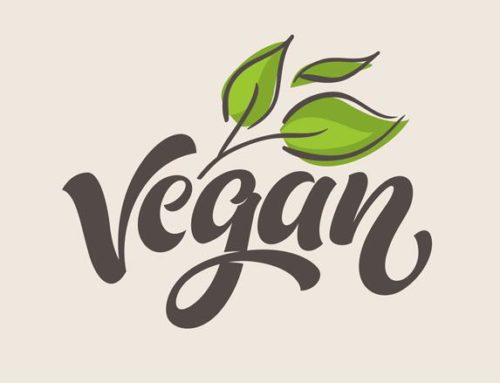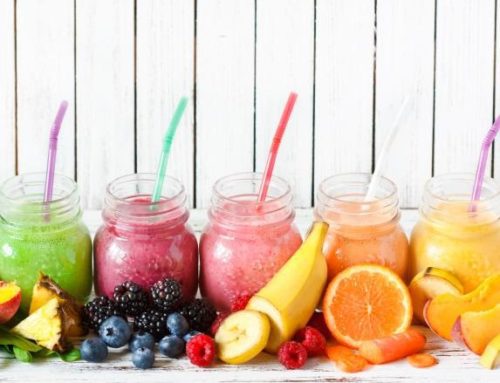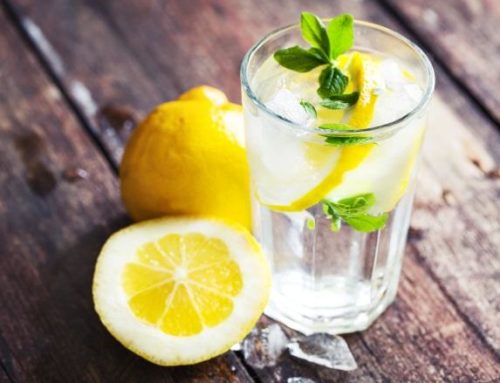As a health coach and nutritionist, I get asked questions all the time about Nutrition Advice for Exercise, specifically how much and when to fuel (eat) in relation to a specific workout. In fact, I’m including an entire course on it in my signature weight loss program, the Fat Furnace which will open for registration next month. Because the topic comes up so often, performance nutrition is confusing and it’s such a critical component of a healthy lifestyle I thought I’d share this quick post with very basic guidelines.
Exercise is an important part of a healthy lifestyle, which is why I’ve included it as one of the 4 Universal Diet Truths of my Clean & Colorful Concept:
- Eat Less Processed Food.
- Eat all 5 Colors Everyday.
- Swap one Snack or Meal per day with a Juice or Smoothie.
- Exercise at least 21-Minutes a Day 6 Days a Week.
A clean and colorful diet and exercise work hand in hand to help your body function, look and feel its best. You can’t really have one without the other and proper fueling is essential to your fitness success.
So what is a healthy, Clean & Colorful diet?
In addition to following the 4 universal diet truths listed above, there are some more details to the types and composition of food you should eat. Generally, a clean, colorful and healthy diet is full of plenty of complex carbohydrates, healthy fats, lean proteins and stuffed full of fresh fruits and veggies and tons of water. More specifically, the National Academy of Sciences recommends this breakdown for daily macronutrient composition:
- 45-65% of your calories should come from Carbohydrate
- 10-35% of your calories should come from Protein
- 20-35% of your calories should come from Fat
Through my experience, I have come to like this breakdown a bit better:
- 40-55% of your calories should come from Carbohydrate
- 15-30% of your calories should come from Protein
- 30-35% of your calories should come from Fat
I’ve found that higher quality carbs that are nutrient dense and full of fiber with a good amount of protein and healthy fat is a good way to stay fueled and satisfied. I’m not a carb hater at all, I love my fruits and grains! But I have found a greater level of satiation from slightly higher levels of protein and fat and less refined carbohydrate (sugar).
Making this macronutrient shift is not a major life change. It can be as simple as swapping regular pasta for zucchini noodles or spaghetti squash and adding some ground turkey or other plant based protein for one of your main meals. Plus, you’ll get more phytochemical benefit from the veggie base over the refined flour from traditional pasta.
A balanced healthy diet must have complex carbohydrates from fresh fruits, veggies and whole grains, lean meats, healthy fats!
Basic rules for fueling your workout:
Consume carbs just before your exercise (30-60 minutes) and carbs and protein just after your exercise (less than 20 minutes) is the best way to fuel strong performance and help your body recover and grow stronger.
To Fuel Your Exercise:
It’s best to have some simple carbohydrates about an hour before you head out, not a ton. And the simpler the better, so lower fiber and protein and fat are not entirely necessary or helpful at this point. The exact amount will vary based on your size, but a good 150-250 calories should do. A small bowl of oatmeal with some fresh fruit or a simple banana will do the trick. Sometimes I like an english muffin with banana and honey. A heavy plate of pancakes, eggs and bacon may taste good, but the excess carbs, butter and sugar will actually slow you down.
Remember to eat some carbohydrates about an hour before you go!
To Recover From Your Exercise:
It’s best to get in a mix of protein and carbohydrate sources, again not much more than 200 calories to recover depleted glycogen and fuel your muscles for repair. The general recommendation is about 20g of protein and again, within 20 min of completing exercise. And that is because it is when your muscles are most venerable and looking for the protein for recover and repair. At the end of the day, it’s not about how much protein you eat, it’s about how much your body will absorb. A great option would be a protein shake with fresh fruit or even chocolate milk is handy and does the trick.
Recover with carbohydrates and protein, but always be mindful of sugar and calories!
Does all exercise require pre/post fuel?
Well, it depends, but not really. Especially if weight loss is on your mind. We could get really technical and the performance nutrition industry is robust and confusing. Depending on how hard you want to workout and what your fitness goals are will impact your fueling strategy. Here are some things to consider:
Consequence of over-fueling
If you’re trying to lose weight, fueling is tricky because weight loss is a mathematical equation and you need to create a caloric deficit if you want to shed the pounds and use your body’s stored fuel for energy. A robust fueling strategy could completely negate your exercise efforts.
For example, if you go for a moderate walk for an hour, you can expect to burn 200-300 calories. If you followed these fueling guidelines, you’d actually have consumed 100-200 EXTRA calories. And that would be ok, as long as you take that into consideration with the rest of your daily calorie intake. This is often overlooked and it’s easy to think “well I exercised for an hour, so I earned this.” And while you did, you will still have a difficult time losing weight.
Consequence of under-fueling
This is the other tricky side of performance nutrition that gets us if we’re trying to get stronger and/or lose weight. If you are paying attention to calories, it’s easy to want to skip the fuel to create the deficit. And if you’re working out hard, looking to engage in high intensity, muscle damaging (in a good way) exercise, failing to pre-fuel could compromise your workout. In theory, having that easy to burn energy on hand will allow you to perform better and hence, burn more calories, get stronger and lose more weight. Additionally, failing to refuel can compromise the repair process, making your future workouts weaker and strength gains more difficult.
Your Exercise Fueling Strategy?
You see there is a lot to consider when it comes to food and exercise. You’ll get to make the decisions that are best for you based on your body and your goals. But I do hope this basic nutrition advice for exercise proved to be helpful as you learn to navigate the details of performance nutrition!
For more in-depth information on fueling for performance, check out the Gals Guide to Running your First or Fastest Marathon and/or consider joining the wait list for the Fat Furnace Weight Loss Program that will open for registration next month.































Leave A Comment